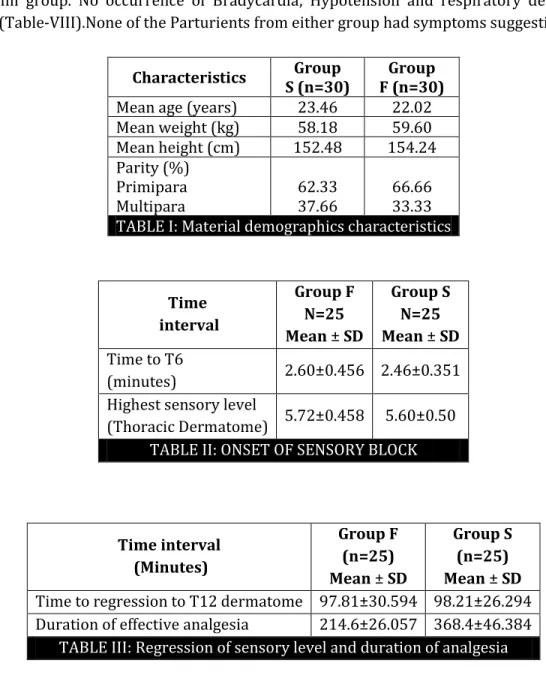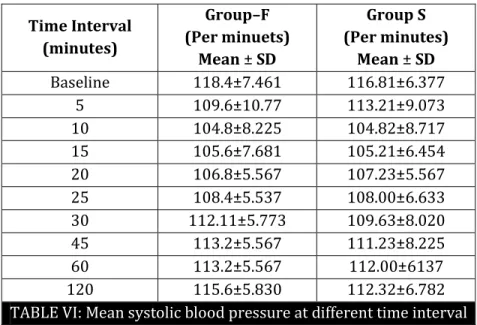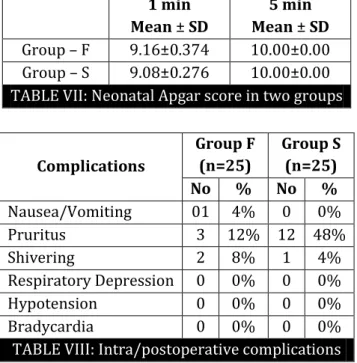COMPARATIVE EVALUATION OF INTRATHECAL BUPIVACAINE-FENTANYL AND BUPIVACAINE-SUFENTANIL FOR CAESAREAN SECTION
Texto
Imagem



Documentos relacionados
AIM : We compared the effects of intrathecal hyperbaric (heavy) 0.5% bupivacaine and isobaric (plain) 0.75%ropivacaine combined with 25micro grams fentanyl regarding the degree
Table IV shows the results of the mixture of isobaric solutions (2% lidocaine, 0.5% bupivacaine, and 50% enantiomeric excess 0.5% bupivacaine) with hyperbaric solutions (1.5%
We conclude that spinal anesthesia for cesarean section with doses of hyperbaric bupivacaine 0.5% exceeding 10 mg, combined with 100 µ g of morphine and the use of NSAID dur- ing
On this basis we designed a double blind controlled study to evaluate and compare the characteristics of spinal block and its side effects in elderly patients
CONCLUSION: Intrathecal nalbuphine added to hyperbaric bupivacaine provides better quality of block and prolongs the post-operative analgesia for almost 7 to 8 hours
Thus, we would like to present a case where status epilepticus in the form of generalised tonic-clonic seizures (GTC) has developed subsequent to the intrathecal ad- ministration
The aim of our study was to evaluate the effects of intrathecal administration of dexmedetomidine 10 µg on low dose bupivacaine 0.5% (5 mg), to know the onset and
Patients were randomly allocated to receive intrathecally either 10 mg isobaric bupivacaine plus 5 µg dexmetedomidine (group D n = 38) or 10 mg isobaric bupivacaine plus 25 mg